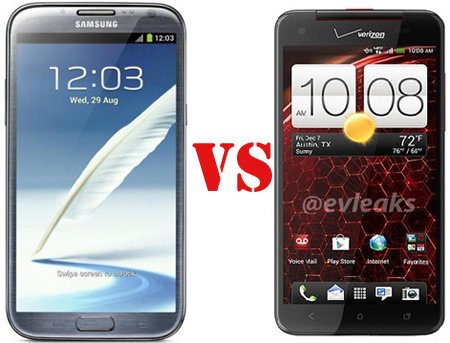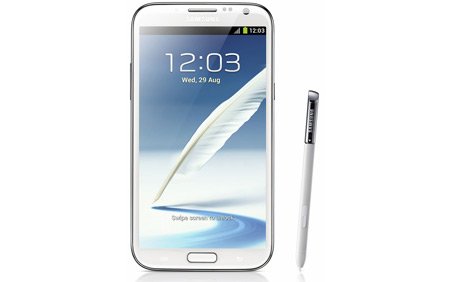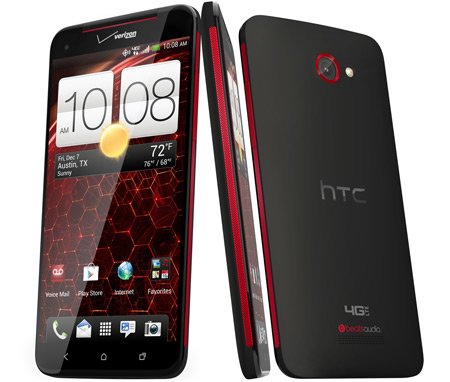Samsung Galaxy Note 2 vs HTC Droid DNA, the specs battle
When they were announced for the first time, HTC Droid DNA and Samsung’s Galaxy Note 2 were among the most anticipated handsets of the year. Now that they have finally been released, every gadget lover out there is curious to see which of them is better. So we made a post in which we compare them to one another. Read the following to find out more.
The design
The body of the Droid DNA comes with the following measurements: 143 mm x 71 mm x 9.73. By comparison, the Galaxy Note 2 has these proportions: 151.1 mm x 80.5 mm x 9.4 mm, which make it thicker. The weight of the HTC phone is 138 g while its opponent weighs a total of 183 g, so the Droid DNA fares better in this area. The latter is a smartphone that is more comfortable in the hand and it also has a great design compared to the Galaxy Note 2.
Smartphones have always had issues with their batteries. These two handsets are no different or immune to such a problem. But the biggest loser here is HTC’s Droid DNA because of its 2020 mAh option. Compared to this, Samsung’s Galaxy Note is installed with a 3100 mAh battery. Not to mention that the battery employed by HTC cannot be taken off, whereas the Samsung one can.
The display
In terms of touchscreen, the HTC Droid DNA smartphone isn’t as great as the Galaxy Note made by Samsung. While the former is a 5″ affair, the latter sports a 5.55″ display and it’s of the Super AMOLED variety. Another con of HTC’s latest phone is the fact that it lacks the kind of superb pixel density of its Samsung rival. However, we noticed that the Galaxy Note 2 does not deliver the greatest color reproduction we’ve seen from Samsung gadgets before. But both handsets excel when it comes to viewing angles, resolution and crispness.
[sc name=”banner-jos”]
The amount of memory present on each of the phones is 2GB. During performance tests, the Galaxy Note 2 delivered superior speeds and overall performance, even if the the Droid DNA comes with better specifications CPU and GPU-wise. But HTC’s latest device held its own against the South Korean threat, offering a great experience.
The operating system
The operating system used by these 2 companies for their smartphones is the same: the Android Jelly Bean version. Both Samsung and HTC announced that the new OS version is going to arrive soon. The type of user interface that is used differs from handset to handset. We had no problem using the two phones; the experience was fluid and smooth in the case of the TouchWiz and the Sense version alike. But the user interface on the Galaxy Note 2 sports many software features and tweaks that are very useful. However, if you prefer something simpler, then the Sense UI is the right choice.
The kind of CPU integrated on the Droid DNA model is a quad-core Qualcomm Snapdragon S4 Pro which works at 1.5GHz. On the other side of the battle, we have the Galaxy Note 2 which uses a quad-core Exynos 4 and works at 1.6GHz. Graphics processors are also different on each of the phones: while HTC’s product ships with an Adreno 320, Samsung’s own smartphone runs a Mali400 MP.
The camera
If you are passionate about photography and clip shooting, you can perform both activities on these phones. And that’s thanks to the 8-megapixel cams that sit on the devices’ rear. There are secondary cameras, too: the HTC phone has a 2-megapixel one and the Galaxy Note 2 boasts a cam with an amount of 1.9MP. Pics and videos looked good after we took/shot them. But the quality displayed by the cameras on the Galaxy Note 2 was comparatively superior.
The Droid DNA phone has not any pen or digitizer included in its default configuration. The Galaxy Note 2 has both of them and they come in very handy. Also, they are both very easy to use and make the user experience very nice overall.
The quantity of storage that each of the companies chose for their creations is the following: only 16GB for the HTC handset and 16/32/64GB for Samsung’s model. Whose other advantage includes one SD card, whereas the Droid DNA does not feature such an option. And that means you will have to be careful how much data you install on the HTC smartphone while going wild on the Galaxy Note 2.





